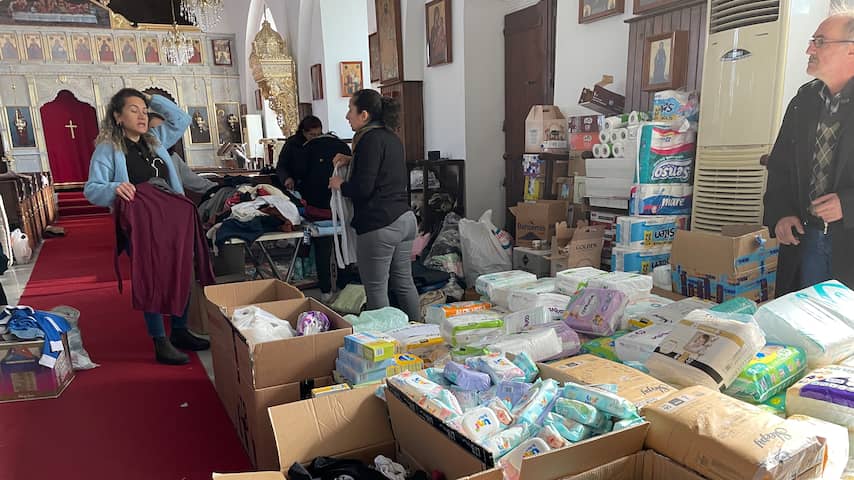Turkey has a small but historically important group of Turkish Christians. Many of them live in the hard-hit province of Hatay. After the earthquakes, they lost everything, including many of their churches. They now fear for the survival of their way of life, they say to NU.nl reporter Nick Augusteijn.
The territory of present-day Turkey is intertwined with Christianity. The final resting place of Mary would have been Ephesus, present-day Selçuk in the province of İzmir. And according to the stories, the followers of Jesus were first called Christians in Antioch, which later became Antakya.
That happened in the Church of Saint Peter. This rock-hewn church dates back to the fourth or fifth century AD, making it one of the oldest churches in the world. The building would have survived the quake.
Antioch has a rich history anyway. ‘The Pearl of the East’ was at one time the largest and most important city of the Roman Empire after Rome and Alexandria (in present-day Egypt).
Ontvang een melding bij nieuws
‘This church is our last stronghold’
Now Antakya is largely in ruins, as are many churches. So is the church of Saints Peter and Paul, an important tourist attraction. In the port city of Iskenderun, the coastal town of Arsuz and Samandag, important churches for the local community were also killed, varying from Catholic churches, Armenian Catholic churches and Greek Orthodox churches.
Christians in Turkey are a group that is getting smaller and smaller. Where in the latter days of the Ottoman Empire they still accounted for a quarter of the population, that is now only 0.4 percent, or about 300,000 believers.
Many Christians in the area are in a difficult position. They are Turkish citizens, but attend a Greek Orthodox church and speak Arabic by origin. Hatay was first part of the Aleppo province of Ottoman Syria and only formally joined Turkey in 1939. As a group, Christians are therefore searching for their place in society. The church is their anchor.
I meet the Christians who have fled Hatay at the Greek Orthodox Church in Mersin, 275 kilometers away. The site serves as the first reception location and as a collection point for relief supplies. But it also fulfills an important symbolic function for those present. “As far as we are concerned, this is the last stronghold for us Christians in this region,” says a man. “It’s our lifeline.”

People come here for baby food and clean underwear
The reception and relief efforts in the church in Mersin are coordinated by Can, Serdar and Ibrahim, representatives of denominations from the affected area. Cemil from the society in Arsuz is also present today. Together they represent a community of no more than five thousand Christians.
The refugees I speak to here have lost everything, but can come here for clothes and clean underwear. Baby food, diapers and sanitary towels have also been thought of. “It’s a transit location,” says volunteer Jaqueline Yalgin. “We try to accommodate people with people from the neighbourhood, in student houses or hotels, because we don’t have much space ourselves.”
The refugees pass the clothes racks somewhat resignedly. A man is looking for clothes for his young children. Not much later he studies the label of a can of milk powder.

Keeping the community together
Still others are visibly moved by what they find here. “I wish everyone a place like this,” says an older man who introduces himself as Jozef. But worries prevail. “After the destruction, I don’t see how we can keep our culture here,” says the 70-year-old man.
According to Ibrahim from Iskenderun, one of the reasons behind the reception in the church is to keep the community together. “It will take a very long time to restore our way of life in that area, if we ever succeed.”
Jozef himself does not yet know whether he will ever be able to return. “My family and I live in the here and now. We survive.”


